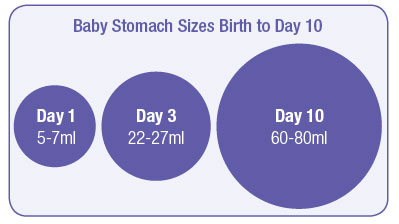While breastfeeding seems like it should be natural and easy, it is often difficult and frustrating. I remember being in tears during my first night with Sunshine, trying to get her to nurse—and that was after my midwife had spent an hour with me after her birth, helping me learn how to breastfeed.

Later, breastfeeding got easier for me and I often felt like I had too much milk, but I have other friends who continued to struggle with nursing their babies for months and were concerned about not producing enough milk. Today, Lansinoh lactation consultant Gina Cicatelli Ciagne is here to answer some questions about low supply and other breastfeeding issues.
KBW: What tips can you give for establishing a good milk supply from the get go?
Gina: Nurse at the breast at times dictated by baby and not your clock. I love telling moms, watch your baby NOT the clock.
KBW: Can a supplemented child return to an exclusively breastfed routine?
Gina: Yes—but it will take time and effort! Your body produces milk based on supply and demand. When you breastfeed less often, your body responds to that by producing less milk. If baby is not feeding at the breast for every feeding, it’s very important to pump when you would normally be feeding baby at your breast. This way your body gets regular signals to keep making milk which will help maintain your milk supply. If you haven’t been pumping and are trying to return to exclusive breastfeeding, you will need to breastfeed more often as you re-establish your milk supply.
KBW: What are the signs of low supply/milk production?
Gina: Not being able to produce enough milk is by far the most common concern I hear from pregnant moms. The good news is, very few moms cannot make enough milk so chances are good that this won’t be an issue for you. Because your body produces breastmilk based on demand, the very best way to avoid milk supply issues is by feeding on demand. Take your cues from your baby rather than the clock and don’t limit time at the breast. Breastfed babies know when they are full.
There is more information on our website—check out this article!
KBW: How prevalent is low supply?
Gina: Newborns need to breastfeed often—at least 8-10 times in a 24-hour period and in many cases, more often, especially in the beginning. Many moms begin questioning their milk supply when their newborn asks to be fed every 1.5-2 hours, but this is normal and does NOT mean you have supply issues! Newborns have tiny little tummies and breastmilk is digested much faster than formula, so breastfed babies need to eat more often than formula-fed babies.

Moms should watch their newborn’s weight and their wet/dirty diapers for signs of milk supply issues, and not because baby is fussy or needs to eat often.
There is also great information about milk supply on KellyMom. I recommend these articles for supply concerns: “Perceived Insufficient Milk” and “Low Supply.”
KBW: What tips can you offer for increasing milk production?
Gina: Breastfeed often, relax, and drink plenty of water. Stress and dehydration are two of breastfeeding’s worst enemies. If you have to be away from baby, pump regularly—and at the times you would be breastfeeding—to keep your body producing plenty of milk.
KBW: Is it easier to tell if your milk supply is running low or not if your breasts are smaller/larger?
Gina: No, every woman’s body and breasts are different. Your breasts may feel “full” or harder, but not always and as your body gets used to how much milk your baby needs, your breasts will be less likely to swell but still have enough milk for your baby.
KBW: Why do is it said that “If the latch is correct, it shouldn’t hurt”? Another friend of mine with 4 breastfed babies said it TOTALLY hurt if she was doing it right—it just didn’t hurt the same way.
Gina: Feeding babies at the breast can be painful, but it isn’t for every woman. Swelling and engorgement can be a challenge. Nipples can become sensitive, cracked or sore. These are normal, but not universal. Every woman’s body and breastfeeding experience is so very different.
Lansinoh offers a number of products designed to help moms overcome these common breastfeeding hurdles. Check out Lansinoh HPA® Lanolin if you are struggling with nipple soreness. Many moms have discovered—and swear by—our TheraPearl 3-in-1 Breast Therapy Packs, which can be used hot or cold for different breastfeeding issues.
KBW: Another friend of mine asks what to do about dry, cracked nipples. She thinks she has an allergy to lanolin and can’t use it. Are there other things that will help?
Our HPA® Lanolin is 100% natural, single-ingredient, and hypoallergenic—unlike other lanolins on the market because it is proprietary to us and because it removes all allergenic components. It’s completely safe for mom and baby and contains NO additives or preservatives.


No Responses Yet